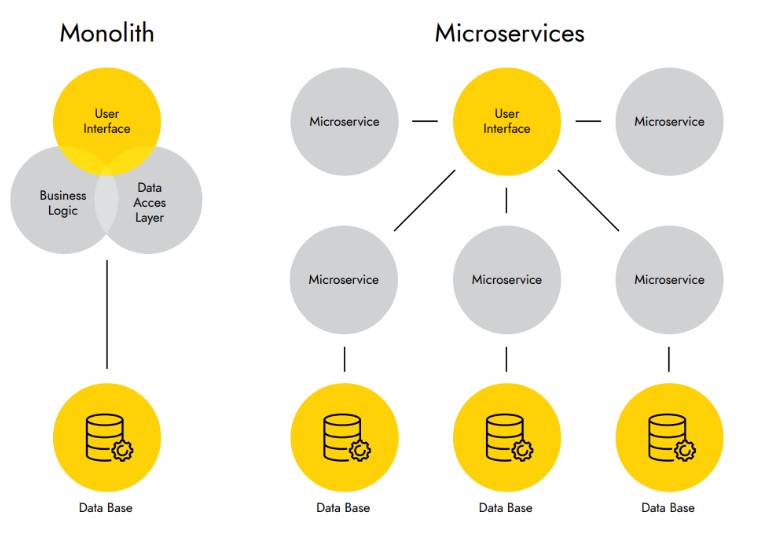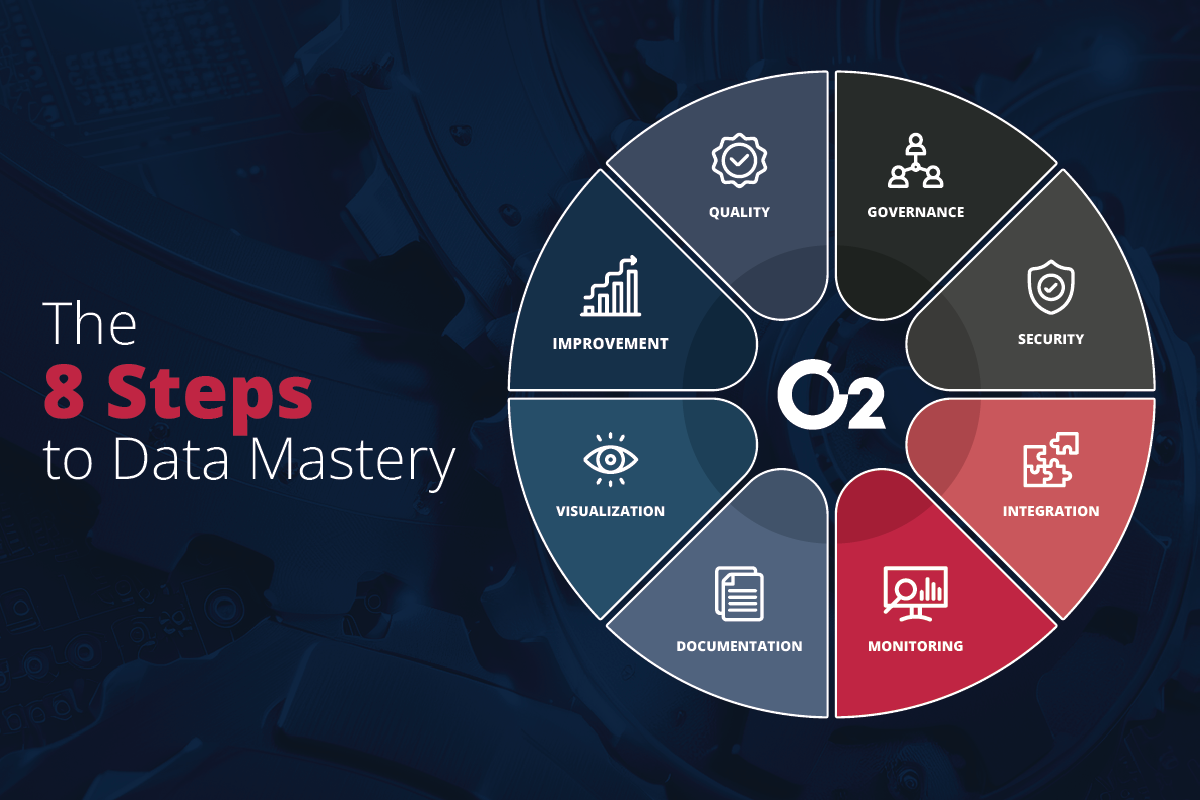
Why composable commerce is the future of retail?
E-commerce businesses are always looking for ways to improve performance. In today’s digital world, this means allowing for a faster rate of change. One approach that’s been getting a lot of attention lately is composable commerce or microservices architecture. This article covers what it is, who it’s for, and the benefits you can expect.
What is composable commerce?
Composable commerce is a new way of splitting your tech architecture into small, independent microservices that are easily testable. The idea is that you can work on one service or feature at a time without having to think about all the other services and work being performed by colleagues. Each team member can work independently. When they’re ready, all they have to do is push their code and it will be automatically integrated into the main code base. This means you don’t need to be perfectly synchronized with other teammates to plan new releases. You can roll out smaller features on a more frequent basis.
“By 2023, organizations using a composable commerce approach will outpace the competition by 80% in the speed of new feature implementation.” ̶ Gartner Symposium 2020, Opening Keynote
Let’s start with a little history. Most brands face current/legacy platform issues when releasing new versions or new modules because they have to invest so much time on bugs and platform upgrades. They have one huge platform that does everything (Product Catalog, Checkout, OMS, PIM), and each time they publish a new feature, they need to QA the entire solution—which requires a lot of coordination, QA and dev time. At the end of the day, their development speed isn’t what it should be. This is the case for many “monolithic” e-commerce platforms: the front-end and back-end are inseparable and improving one aspect becomes complex.
Most brands are trying to stay with out-of-the-box features, but most of the time, it’s just not possible. The customer experience needs to be unique and fit the overall brand experience. Brands then have 2 options: either create custom work that will be costly to develop and costly to maintain, or stay out-of-the-box with a more generic solution that might not be the best fit in terms of processes and customer experience. Composable commerce makes it easier to create and maintain value-added customizations to brands.
The benefits of using a composable commerce platform
- Faster release/feature deployment
- Better developer workstreams (developers can work on different sections and aren’t dependant on each others’ work)
- Less QA, more QA automation
- Better overall customer experience
- Better integration with internal systems
- Use the best systems available with a best-of-breed approach
- Continuous integration and development
- Language agnostic (API-based)
What about internal system integration?
Composable commerce allows for better integration with your current systems. See this as a puzzle: composable commerce will be the part that molds perfectly into your current tech stack. For example, if you have an order management system (OMS) that manages inventory and order fulfillment, you won’t be forced to use the e-commerce OMS and can simply use it for what it was built for.
Composable commerce allows you to use whichever systems are the best in their category for each process—under what we call the best-of-breed approach. This means you’ll be able to pick the best payment platform, the best OMS, the best frontend, the best CMS and the best extensions for your organization instead of having a single platform that includes lots of functions that aren’t necessarily the best in their category.
Another good thing about composable commerce is that they’re language agnostic. You don’t need to know what language or framework they were built with. Instead, you just need to know their APIs and how to communicate with them. So, if you’re a .NET, a PHP or a NodeJS organization, you’ll be able to code in the language your developers are most fluent with.
MACH architecture: What is it?
When you add the following technical concepts, you get MACH architecture that leverages the best, future-proof technologies:
- Microservices
- APIs
- Cloud
- Headless
Without going too deep into the technology, APIs make it easy for microservices to communicate with each other since they have a unique and defined way of communicating.
Akeneo, a global leader in Product Experience Management (PXM) and Product Information Management (PIM) solutions, is a great example of a composable commerce platform. It was designed from the ground up with APIs in mind, making it easy to plug into any e-commerce platform or technology. Since Akeneo uses a standard API, it can change platforms, add features and improve their products as long as it keeps its API stable. So, for the e-commerce platform, it’s easier to maintain connectivity because all it needs to know is if there are any changes in the API. Monolithic software would require that we test the entire e-commerce platform along with the PIM software, even if we just wanted to make changes to the PIM software.
The cloud offers elasticity, scalability and high availability. Composable commerce platforms are deployed in the cloud because it allows businesses to quickly add or remove capacity, depending on performance needs. Also, the cloud leverages CI/CD (Continuous integration, Continuous Delivery) tools that make it easy to deploy and test new features.
Headless commerce is a term used when you take all customer experience components—such as design, merchandising, checkout and order management—out of the e-commerce platform. By doing this, you can use any technology for the customer experience, such as a website, mobile app or even chatbots. This gives you a lot of flexibility to choose the best customer experience technology for your needs and budget while also offering your customers the best possible experience to support your brand uniqueness. (looking for a good whitepaper on PWA and Headless, click here).
Microservices architecture: Is it right for my company?
In sum, if you want to leverage composable commerce, you need to be a tech-savvy organization or have a tech-savvy partner that understands technology and the benefits of fully automated infrastructure. You’ll spend more time integrating multiple best-in-class systems, as opposed to using a fully integrated solution. You’ll also need to change your ways of thinking and the development process.
For instance, for every feature you’ll have to write a set of automated tests that will run before each deployment to make sure your platform preserves its integrity. That automated QA takes longer to code, but will require less maintenance in the future.
So, if you’re looking for a solid and stable solution, fast product iterations and improvements, a best-system approach and better performance, composable commerce is for you.
Conversely, if you’re looking for out-of-the-box features, cheap development costs, no-code solutions where there are user interfaces to control everything, and are willing to stay out-of-the-box, composable might not be the right solution for you right now.
Composable commerce is evolving quickly. Maybe it will be easier in the future and won’t require any coding skills, but we aren’t there yet.
We believe this type of architecture is future-proof. No matter what new trend, platform or work method changes emerge, you’ll be able to adapt to it easily.




